From Tokyo to Tuscany: 16 Food Experiences That Justify the Airfare
Some meals transcend simple sustenance to become transformative experiences that linger in memory long after the last bite. These extraordinary culinary encounters justify crossing oceans, navigating time zones, and investing significant resources to reach destinations where food becomes art, culture, and profound human connection.
Food travel experiences worldwide offer more than just exceptional dining – they provide windows into cultures, traditions, and communities that cannot be understood through any other medium. Each destination on this carefully curated list represents a pilgrimage site for serious food enthusiasts who understand that authentic culinary experiences are worth any journey.
These gastronomic experiences range from Michelin-starred temples of haute cuisine to humble street vendors whose recipes have been perfected over generations. What unites them is their ability to create moments of pure joy and cultural revelation through the universal language of exceptional food.
The Philosophy of Culinary Travel
True culinary travel destinations offer more than outstanding restaurants – they provide complete immersive experiences where food reflects history, geography, and cultural identity. The best food tourism involves understanding context, appreciating craftsmanship, and connecting with communities through shared meals.
Authentic gastronomic experiences require moving beyond tourist-focused establishments to discover places where locals actually eat. This might mean street-side stalls in Bangkok, family-run trattorias in Italian hill towns, or markets where fishermen sell their daily catch directly to home cooks.
The investment in culinary vacation planning pays dividends in memories and understanding that last lifetimes. These experiences often become defining moments in travelers’ journeys, creating deeper appreciation for cultural diversity and human creativity expressed through food.
Asia: Where Tradition Meets Innovation
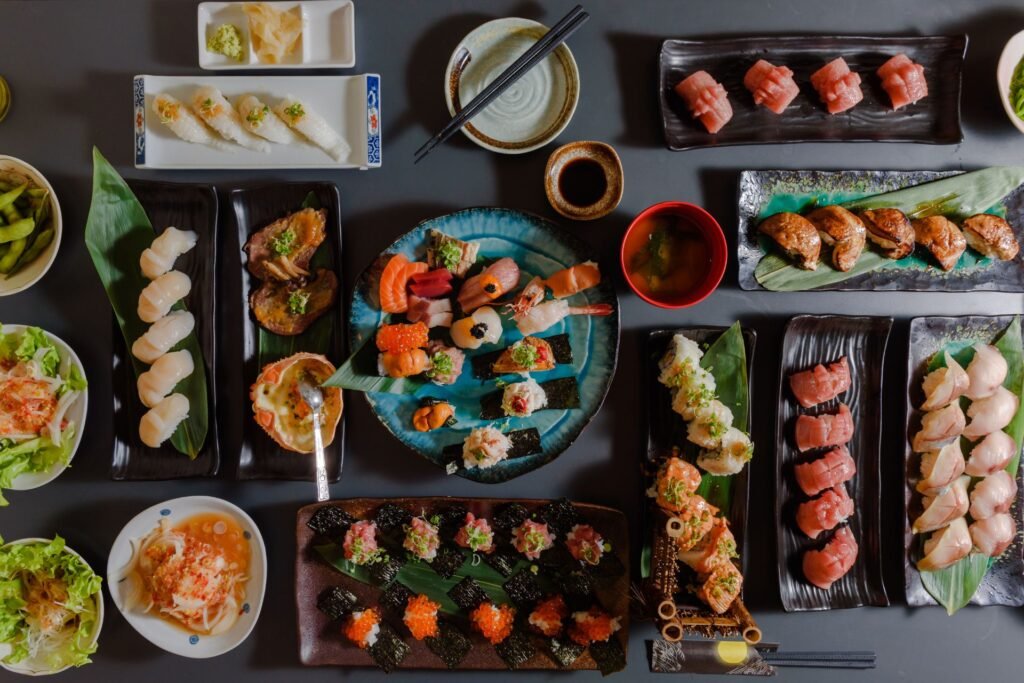
Tokyo, Japan: Tsukiji Fish Market and Sushi Mastery
Tokyo’s legendary Tsukiji Fish Market represents the epicenter of global seafood excellence, where tuna auctions determine prices worldwide and sushi masters demonstrate centuries-old techniques. The early morning tuna auctions showcase the serious business behind Japan’s most famous culinary export.
Surrounding the market, tiny sushi bars serve the freshest fish in the world, prepared by craftsmen who spent decades perfecting their knife skills and rice preparation. These intimate establishments often seat fewer than ten people, creating personal interactions with masters who treat each piece of sushi as individual artwork.
The experience extends beyond consumption to education about seasonal fish, regional preparations, and the philosophy underlying Japanese cuisine. Many establishments offer behind-the-scenes tours explaining fish selection, preparation techniques, and cultural significance of different species.
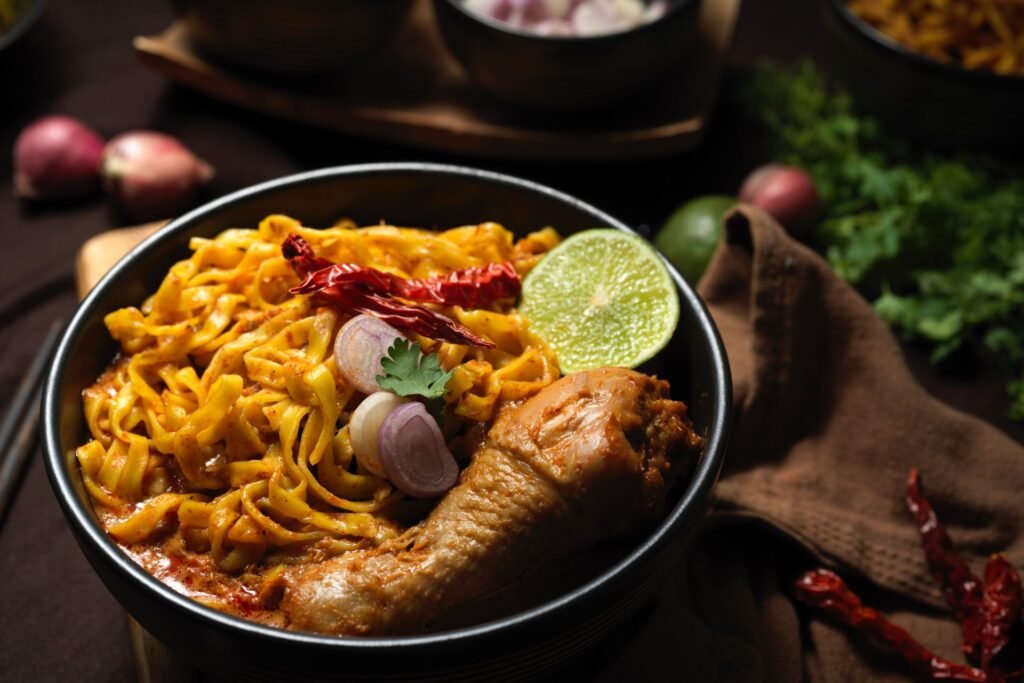
Bangkok, Thailand: Street Food Paradise
Bangkok’s street food scene represents one of the world’s most vibrant and accessible food cultures, where incredible complexity and flavor develop in tiny mobile kitchens throughout the city. Every neighborhood offers different specialties, from pad thai prepared on portable wok stations to complex curries that simmer for hours.
The diversity overwhelms newcomers – som tam (papaya salad) vendors operate next to mango sticky rice specialists, while boat noodle sellers compete with grilled meat skewer artists. Each stall represents generations of recipe refinement and technique perfection.
Street food tours led by local guides navigate this incredible variety while explaining ingredients, preparation methods, and cultural contexts. These experiences often include market visits where vendors explain ingredient selection and seasonal variations that affect dishes throughout the year.
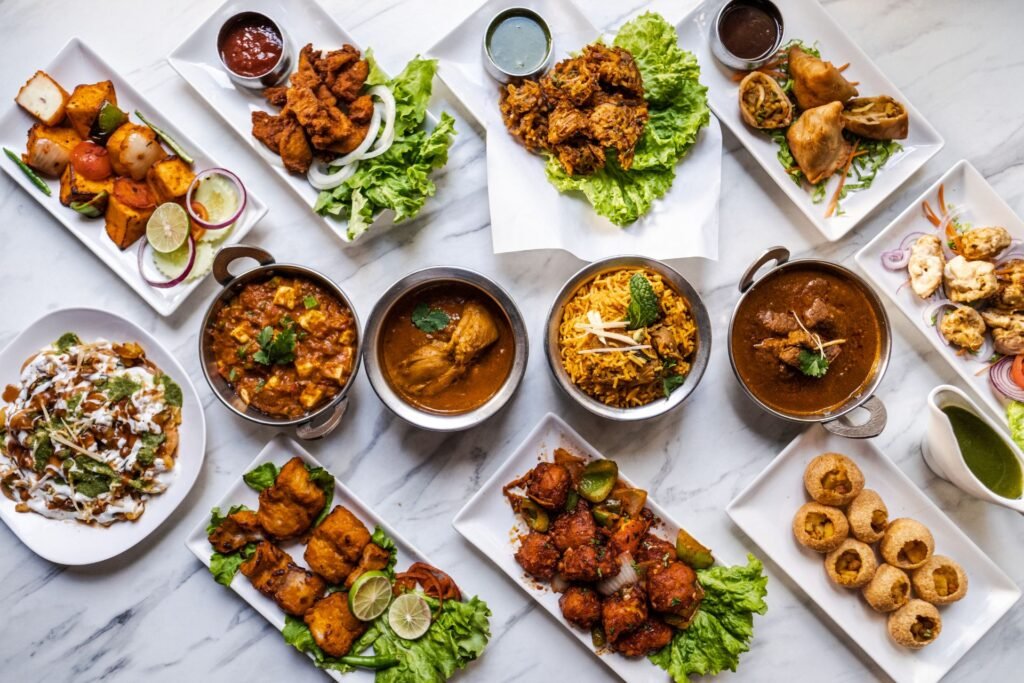
Mumbai, India: Spice Markets and Regional Cuisines
Mumbai’s spice markets assault the senses with incredible aromas, colors, and flavors that define Indian cuisine’s complexity. Crawford Market and surrounding areas offer hundreds of spice varieties, many unfamiliar to Western palates but essential to authentic Indian cooking.
The city’s street food reflects regional influences from across India, with vendors specializing in particular states or communities. Pav bhaji represents Mumbai’s signature dish, while regional specialties like South Indian dosas or Gujarati dhokla showcase India’s incredible culinary diversity.
Cooking classes in local homes provide intimate experiences where families share recipes passed down through generations. These sessions often include market visits for ingredient selection, followed by hands-on preparation and shared meals that create lasting connections.
Europe: Timeless Culinary Traditions
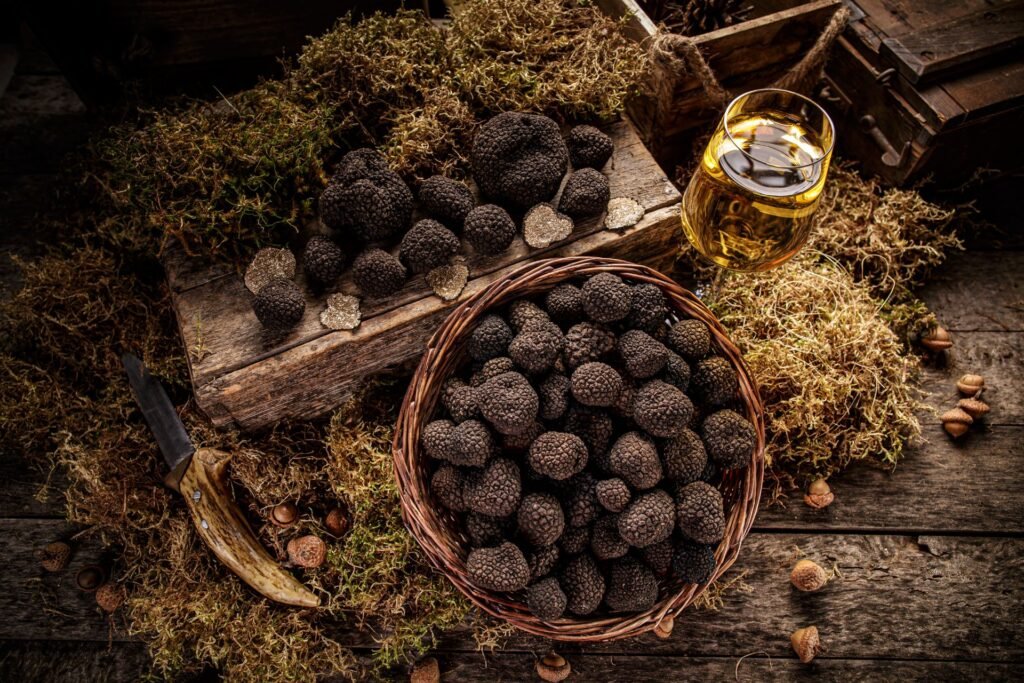
Tuscany, Italy: Wine Estates and Truffle Hunting
Tuscany’s rolling hills conceal culinary treasures that justify international pilgrimages – ancient wine estates where families have perfected viticulture for centuries, and forests where trained dogs help hunters discover precious truffles worth more than gold.
Wine tastings at historic estates like Castello di Brolio or Antinori provide education about terroir, grape varieties, and traditional winemaking techniques. These experiences often include cellar tours, vineyard walks, and meals that pair local cuisine with estate wines.
Truffle hunting expeditions during autumn and winter seasons offer rare opportunities to participate in ancient traditions. Experienced hunters and their trained dogs lead guests through oak forests, explaining truffle biology and harvesting techniques while searching for these prized fungi.

Paris, France: Michelin Stars and Market Culture
Paris maintains its position as the global capital of haute cuisine, where Michelin stars represent the ultimate culinary achievement. Restaurants like L’Ambroisie and Guy Savoy offer experiences that define fine dining excellence through impeccable technique, premium ingredients, and artistic presentation.
The city’s markets, from Marché des Enfants Rouges to Marché Saint-Germain, showcase France’s commitment to quality ingredients and artisanal products. These vibrant spaces offer interactions with producers, tastings of regional specialties, and insights into French food culture’s foundation.
Cooking classes at professional culinary schools or with renowned chefs provide hands-on education in French techniques. These intensive sessions often focus on specific skills like pastry making, sauce preparation, or classic dish execution.
San Sebastian, Spain: Pintxos and Innovation
San Sebastian boasts the highest concentration of Michelin stars per capita globally while maintaining vibrant pintxos culture that makes exceptional cuisine accessible to everyone. The city’s dual culinary personality creates unique experiences unavailable elsewhere.
Pintxos bar hopping reveals incredible creativity applied to small plate format, with each establishment specializing in particular preparations or ingredients. Local guides explain ordering customs, wine pairings, and the social aspects of pintxos culture.
High-end restaurants like Arzak and Mugaritz represent the forefront of culinary innovation, applying molecular gastronomy techniques to traditional Basque ingredients. These establishments require advance reservations but offer unforgettable experiences that push culinary boundaries.
Americas: Fusion and Tradition
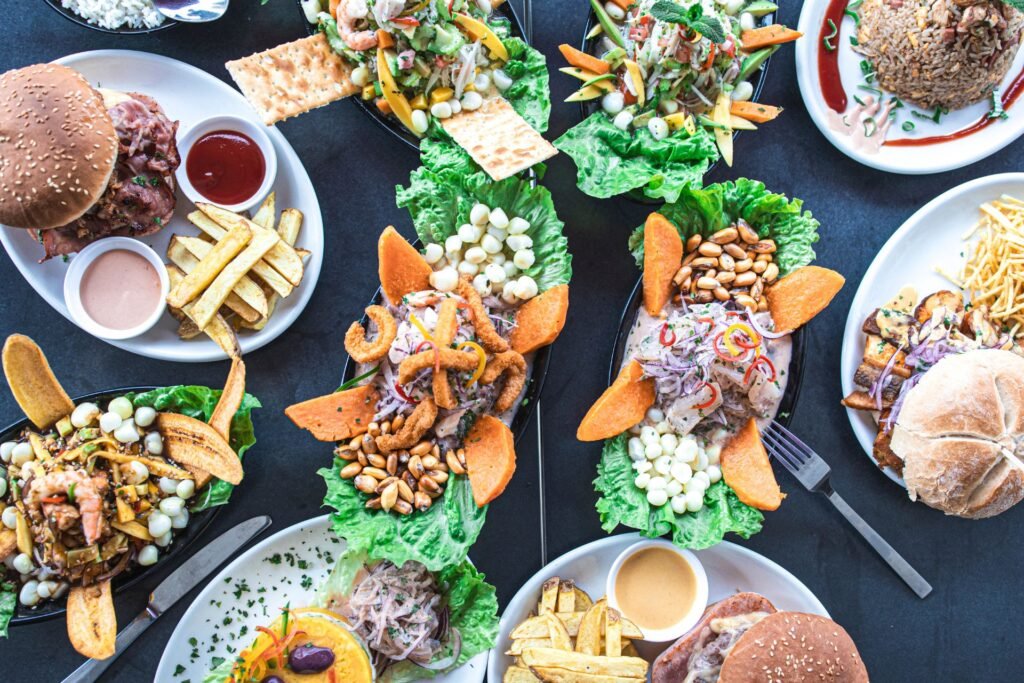
Lima, Peru: Nikkei and Novo Andino Cuisines
Lima’s culinary renaissance combines indigenous Peruvian ingredients with Japanese techniques (Nikkei cuisine) and modern international influences (Novo Andino). This fusion creates entirely new flavor profiles unavailable elsewhere in the world.
Restaurants like Central and Maido showcase Peru’s incredible biodiversity through ingredients sourced from different altitude levels, from Amazon fruits to high-altitude tubers. These establishments offer tasting menus that educate diners about Peru’s ecological diversity.
Cooking classes focusing on traditional techniques like ceviche preparation or quinoa cooking provide hands-on experience with ancient ingredients and preparation methods. Market visits include explanations of indigenous ingredients and their nutritional and cultural significance.
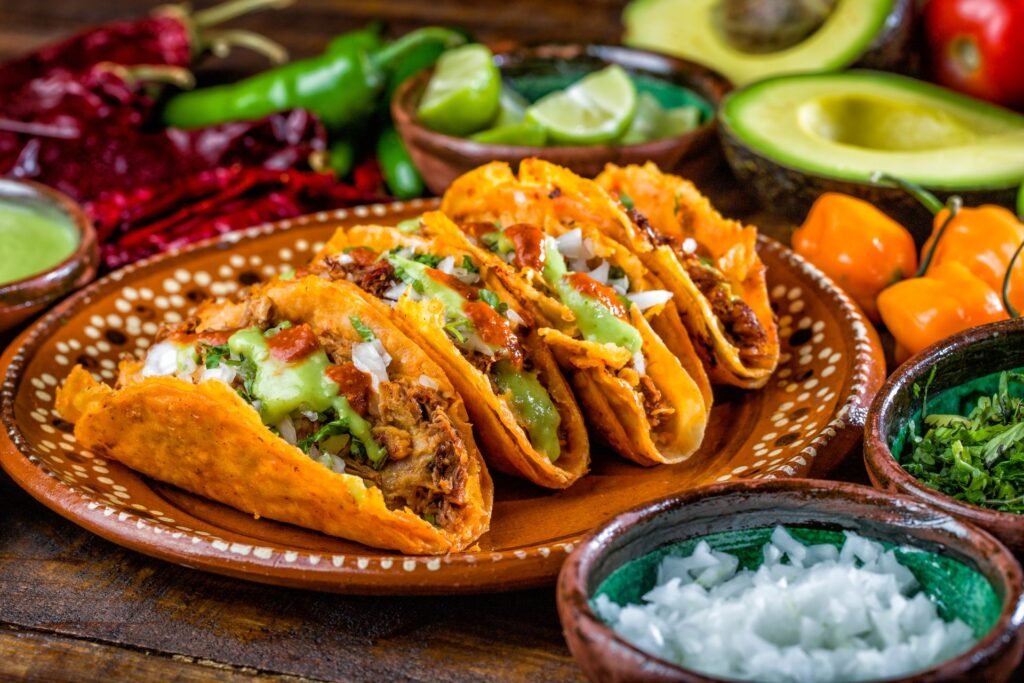
Mexico City, Mexico: Street Tacos and Mezcal Culture
Mexico City’s street food scene represents some of the world’s most complex and satisfying casual cuisine, where simple tacos become vehicles for incredible flavor combinations and traditional preparation techniques.
Each neighborhood offers different specialties, from carnitas in Michoacan-style to cochinita pibil reflecting Yucatecan influences. The diversity reflects Mexico’s regional culinary traditions concentrated in the capital city.
Mezcal tastings provide education about agave varieties, traditional production methods, and regional differences between mezcal-producing states. These experiences often include visits to traditional palapas where master distillers explain their craft.
Napa Valley, California: Farm-to-Table and Wine Pairings
Napa Valley pioneered farm-to-table dining in America, creating experiences where restaurants source ingredients from specific farms and vineyards to create perfectly coordinated meals and wine pairings.
Restaurants like The French Laundry and Bouchon offer different approaches to California cuisine, from elaborate tasting menus to casual bistro fare, all emphasizing local ingredients and wine integration.
Vineyard tours and tastings provide education about California winemaking while showcasing the region’s commitment to sustainable agriculture and environmental stewardship. Many experiences include food pairings designed to highlight wine characteristics.
Middle East and Africa: Ancient Traditions
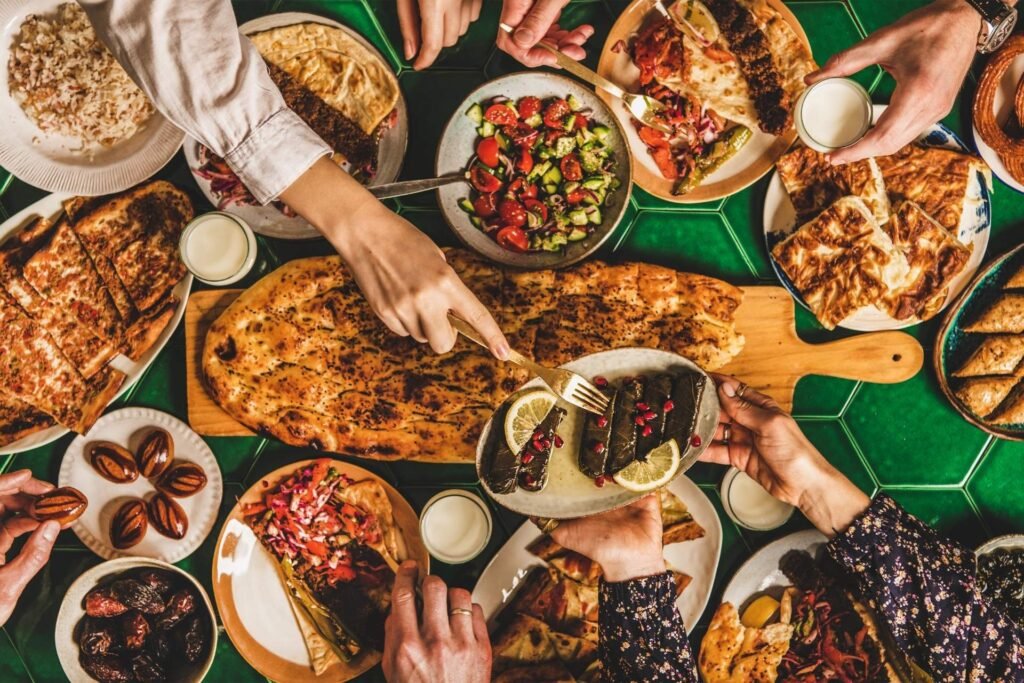
Istanbul, Turkey: Ottoman Cuisine and Spice Route Heritage
Istanbul’s position bridging Europe and Asia creates unique culinary opportunities where Ottoman palace cuisine meets street food traditions influenced by the ancient spice route. The city’s food scene reflects centuries of cultural exchange.
Traditional restaurants serve dishes that originated in Ottoman palace kitchens, with complex preparation methods and rare ingredients. These establishments often occupy historic buildings that enhance the cultural experience.
Spice bazaar visits reveal the incredible variety of spices, teas, and specialty items that define Turkish cuisine. Vendors explain usage, quality indicators, and traditional preparation methods for unfamiliar ingredients.
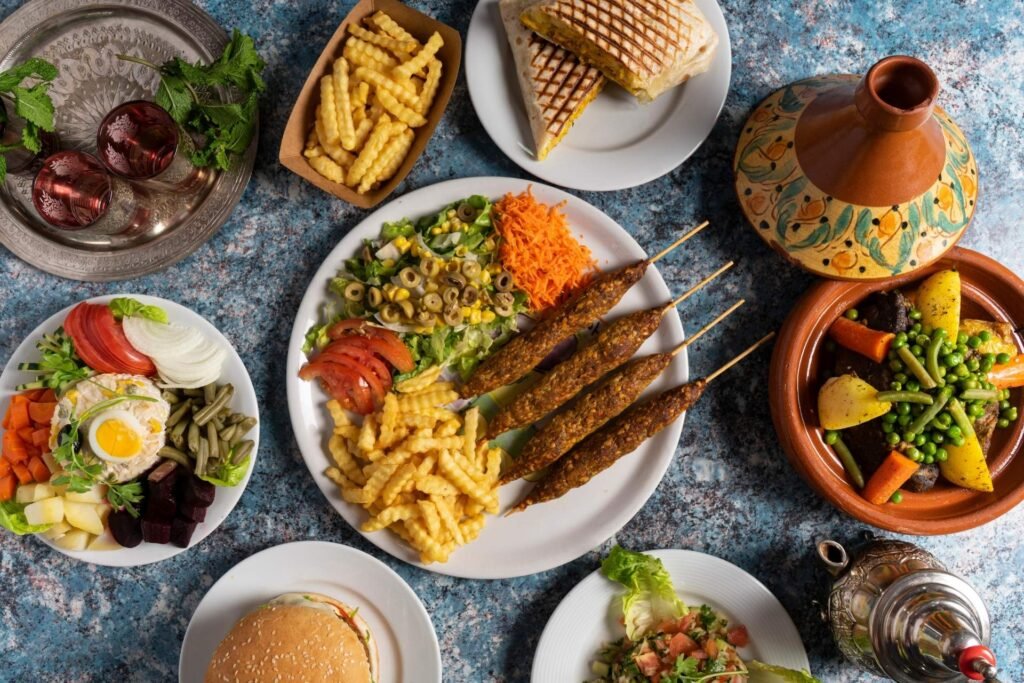
Marrakech, Morocco: Tagines and Medina Markets
Marrakech’s medina markets offer sensory overload experiences where mountains of spices, preserved fruits, and exotic ingredients create aromatic mazes that define North African cuisine’s complexity.
Traditional tagine cooking classes provide hands-on experience with Morocco’s signature preparation method, including spice blend creation, slow-cooking techniques, and presentation traditions. These sessions often take place in riads with traditional wood-fired ovens.
Restaurant experiences range from street-side stalls serving simple but perfect dishes to elaborate palace restaurants where musicians and dancers accompany multi-course meals featuring classic Moroccan preparations.
Oceania: Fresh Ingredients and Innovation
Sydney, Australia: Harbor Dining and Modern Australian
Sydney’s harbor setting creates spectacular backdrops for restaurants showcasing modern Australian cuisine, which combines indigenous ingredients with international techniques and influences from the city’s diverse population.
Restaurants like Bennelong and Quay offer harbor views alongside menus featuring native Australian ingredients like wattleseed, finger lime, and kangaroo, prepared with contemporary techniques.
Market visits and cooking classes focus on indigenous ingredients and their traditional uses, providing education about Australia’s original food culture alongside modern interpretations.
Planning Your Culinary Journey
Successful food tourism requires research, planning, and flexibility to maximize experiences while managing logistics and budgets. The best culinary vacations balance planned experiences with spontaneous discoveries.
Timing and Seasonality
Many food experiences depend on seasonal availability of ingredients or traditional harvest times. White truffle season in Italy runs from October through December, while certain fish species in Japan have specific seasons when quality peaks.
Research local food festivals and special events that might enhance your culinary experience. Many destinations offer cooking competitions, harvest celebrations, or special restaurant events during particular seasons.
Booking and Reservations
Top restaurants require advance reservations, sometimes months ahead for the most sought-after establishments. Make priority reservations immediately after confirming travel dates to avoid disappointment.
Food tours and cooking classes also book up quickly, especially during peak tourist seasons. Research reputable operators with good reviews and clear itineraries that match your interests and experience level.
Budget Considerations
Culinary travel can range from very affordable street food experiences to extremely expensive Michelin-starred meals. Plan budgets that include variety – expensive signature experiences balanced with affordable local discoveries.
Consider package deals that combine accommodations with dining experiences or cooking classes. These arrangements often provide better value than booking components separately while ensuring coordination between experiences.
Health and Safety
Research food safety considerations for destinations, especially when consuming street food or raw preparations. Understand local water safety and any vaccinations recommended for specific regions.
Consider any dietary restrictions or allergies when planning international food experiences. Learn key phrases in local languages to communicate dietary needs clearly to chefs and servers.
These sixteen extraordinary food experiences represent just the beginning of culinary adventures available to passionate food travelers. Each destination offers layers of discovery that reward return visits and deeper exploration.
The investment in culinary travel pays dividends in expanded palates, cultural understanding, and life-enhancing memories that influence how you think about food for years afterward. These experiences often inspire home cooking adventures, wine collecting, or even career changes toward food-related fields.
Most importantly, food travel creates human connections that transcend language barriers and cultural differences. Sharing meals with people from different cultures creates mutual understanding and appreciation that contributes to a more connected and peaceful world.
Whether you’re drawn to ancient traditions preserved in family recipes or cutting-edge innovations that push culinary boundaries, these destinations offer transformative experiences that justify any airfare investment. The memories, knowledge, and inspiration gained from exceptional culinary travel experiences last lifetimes, making them among the most valuable investments in personal enrichment possible.

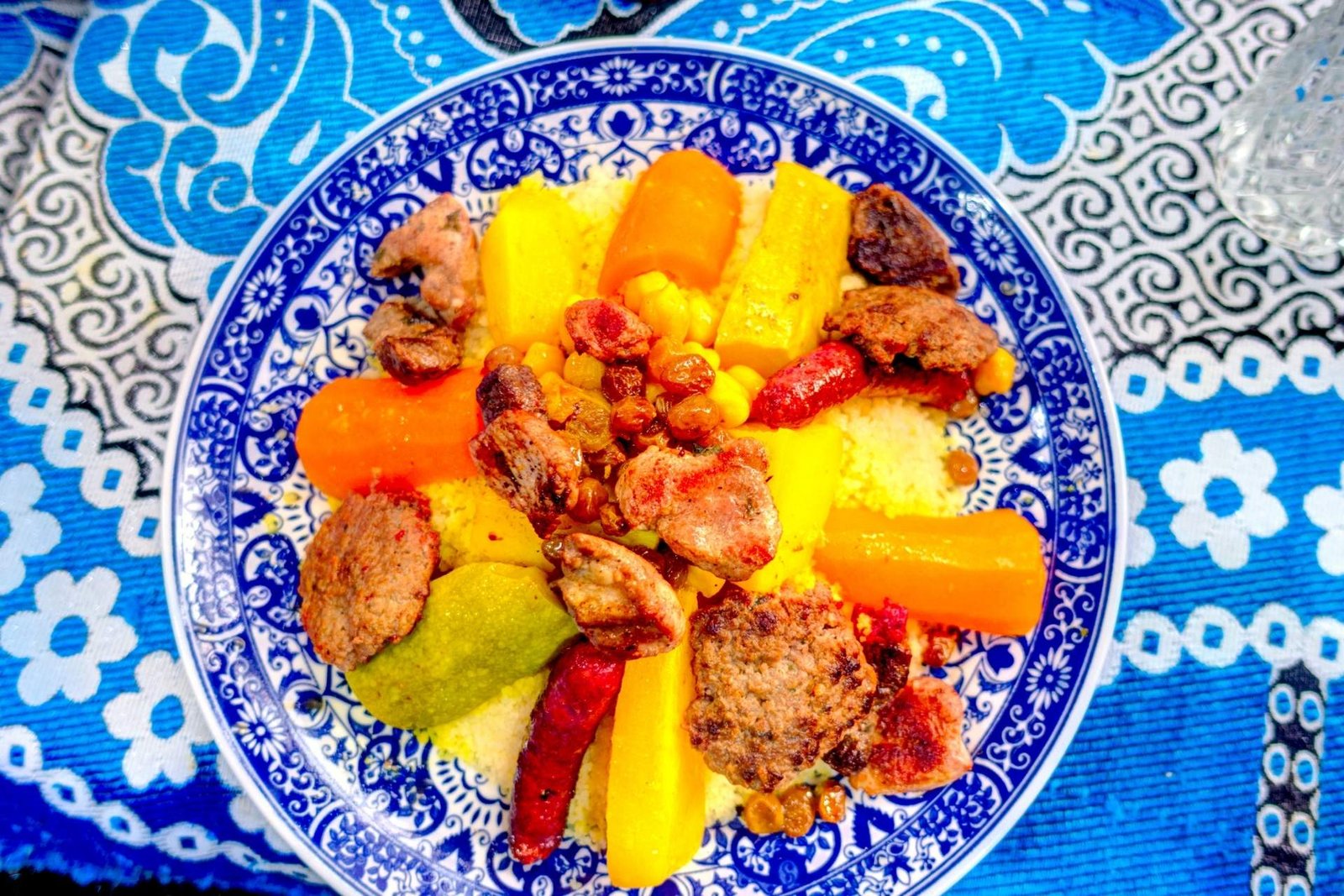
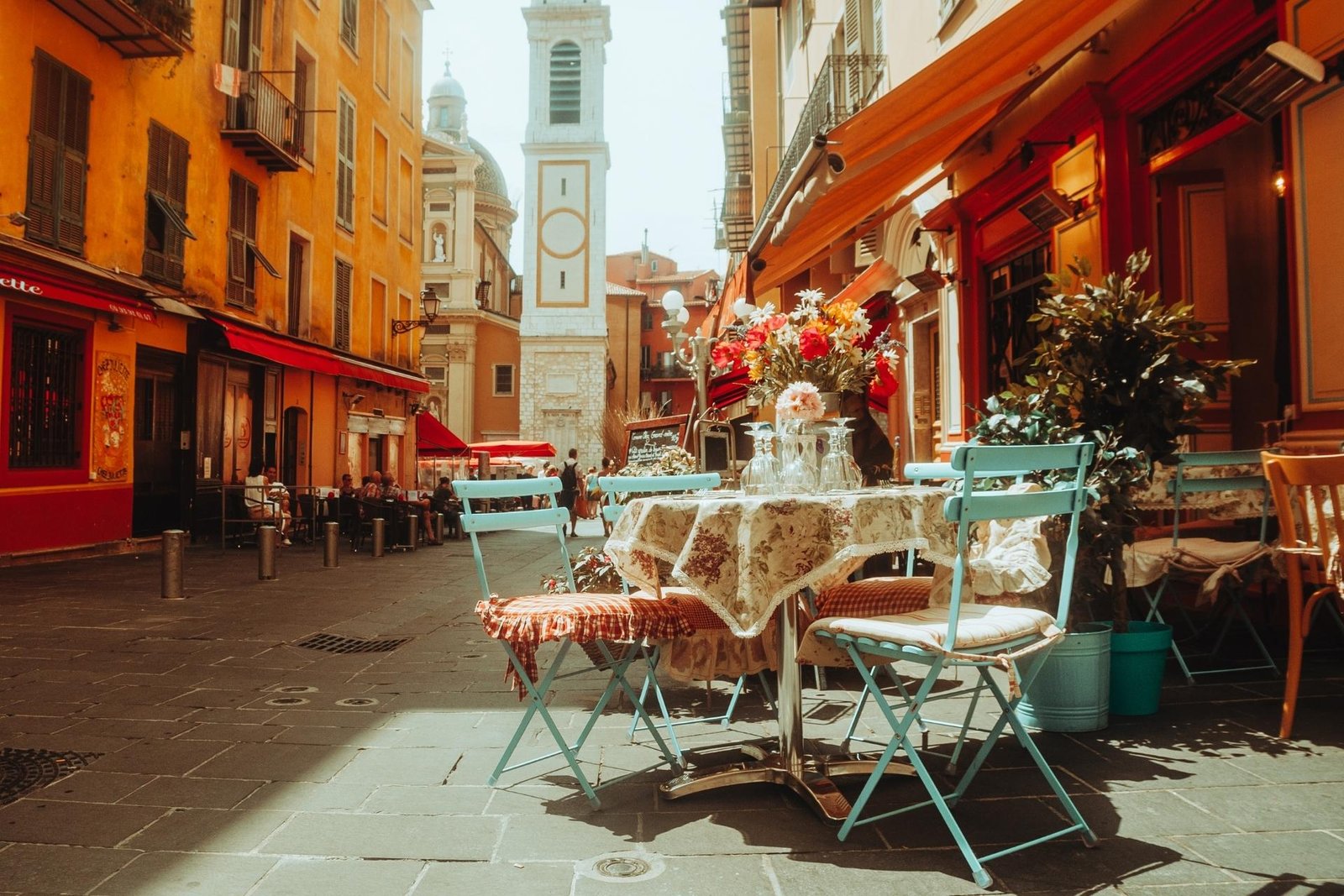
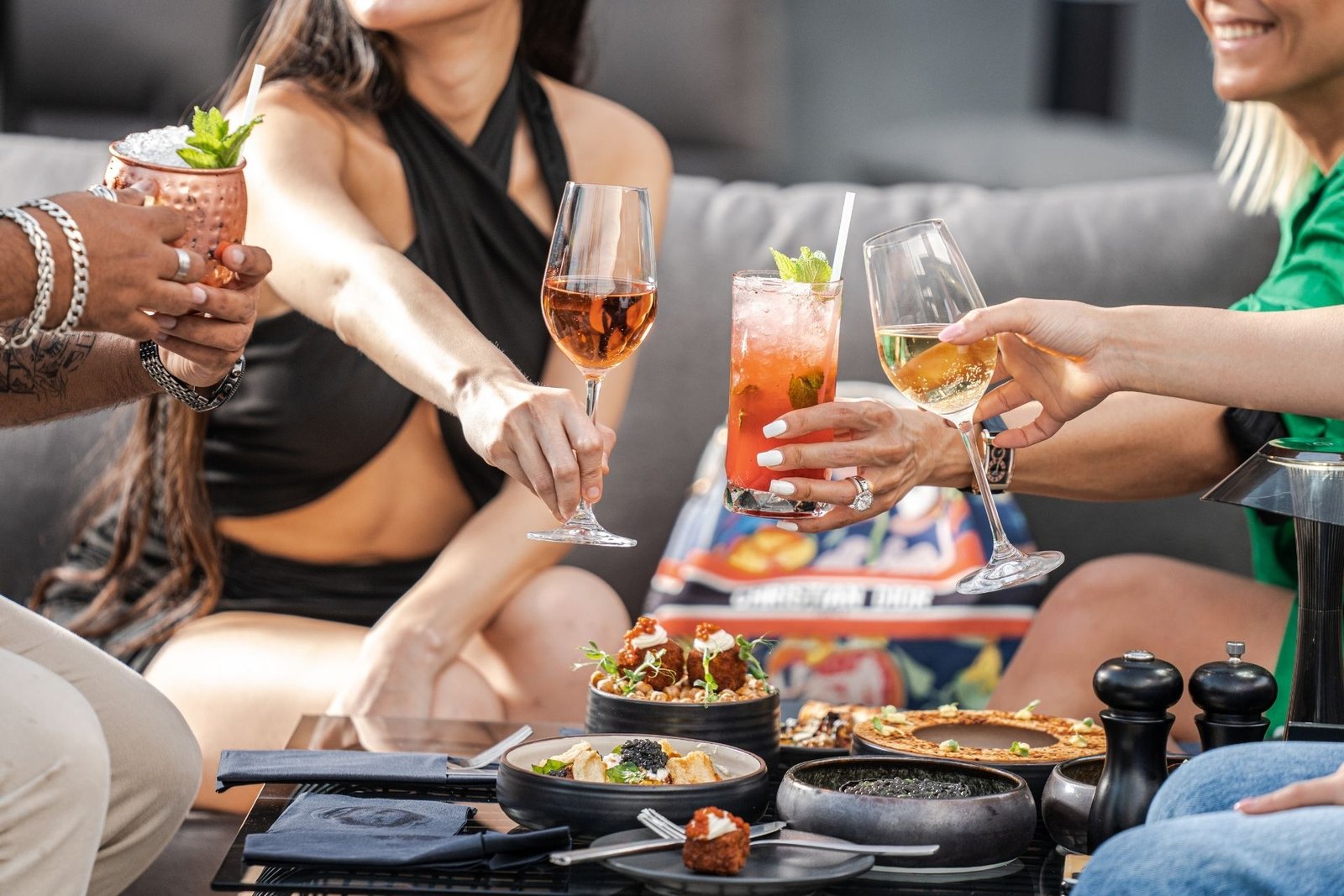
Leave a Reply